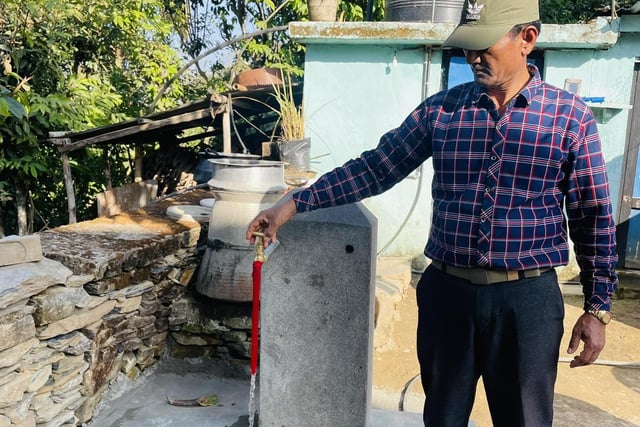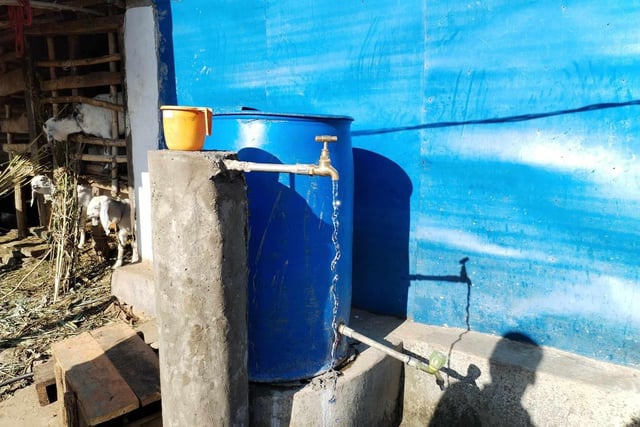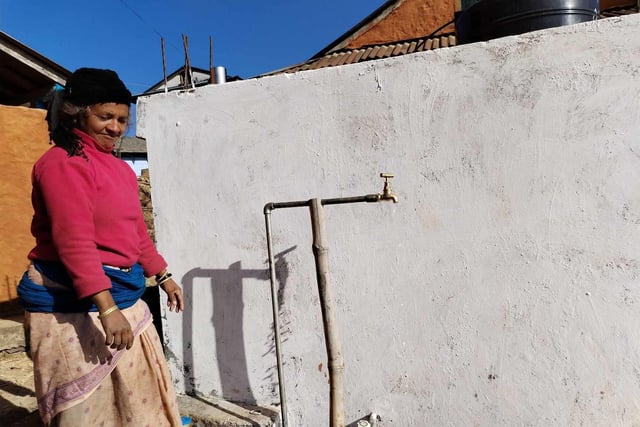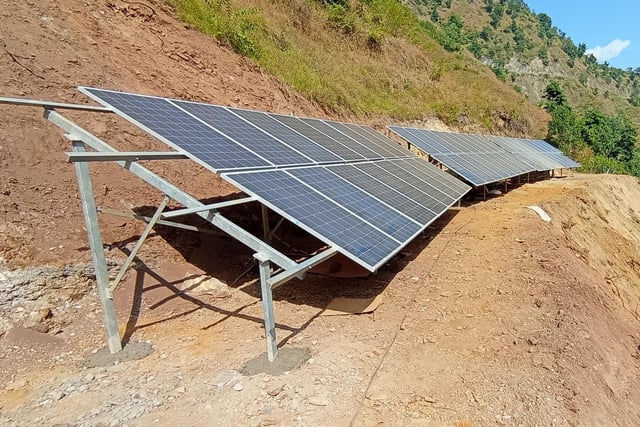The Rotary Club of Danetre Daventry (RCoDD) launched a project in 2022 in partnership with a charity to supply running water to a community and school in a remote area of Nepal, the poorest country in Asia.
The project was completed earlier this year. The club worked in collaboration with Renewable World, an International Non-Government Organisation (INGO) headquartered in Brighton, with regional offices in Kenya and Nepal that aims to provide clean energy to those in need.
Bob Leaper, the head of the international committee of the club, said: “The technology being employed uses solar energy to pump the water and Renewable World are very experienced in this area, having installed more than 30 of these systems to date in Nepal.”
It was determined early on that a Rotary Grant would be necessary for this initiative to succeed in its objectives. As a part of Rotary District 1070, which spans a significant area of Eastern England and includes about 80 clubs, RCoDD is eligible for funding including global grants, for large programmes, and district grants for more “modest endeavours.”
With the help of 17 clubs, other sponsors, and a £8,000 district grant, the required funding of £20,000 was achieved in the spring of 2020.
The installation took place in the first months of this year at Kavre Pokhari in central Nepal, after several delays caused by the outcomes of the Covid measures in Nepal, national elections, and severe weather events. The project benefits roughly 800 individuals, including about 400 residents in the community and 400 students and staff at a school.
The equipment used for the project is called a SolarMUS – solar multi-use system – which uses electricity from several solar panels to power a pump that delivers the water uphill, through a considerable distance, to a reservoir in the community. Around 40,000 litres of water are being pumped daily during the day.
A daily average of 40,000 litres of water are pumped during the day. The peak power produced by solar panels is nine kilowatts.
Bob said: “The great feature of this type of technology is that it represents a super way of using solar electricity without the need to store it in batteries (for example).
“When the sun shines, water is pumped to the uphill reservoir, where it is then available to the people at any time, day or night. The water reservoir acts, in effect, as a storage medium, like a battery.”
According to Bob, the completed project already benefits the Kavre Pokhari community and school. Specifically, secondary-age girls and women no longer have to get up early to trek to the nearby water source, collect water, and carry it up to half a mile uphill to the community, sometimes multiple times a day, to meet their daily needs.
The equipment maintenance of this project is assured by the Water Users’ Committee at Kavre Pokhari, which charges users a nominal fee to cover routine panel cleaning, necessary repairs, and replacement of parts that are past warranty.
The residents of Kavre Pokhari should continue to benefit from this initiative for many years to come, as the life expectancy of solar panels is estimated at up to 40 years.



